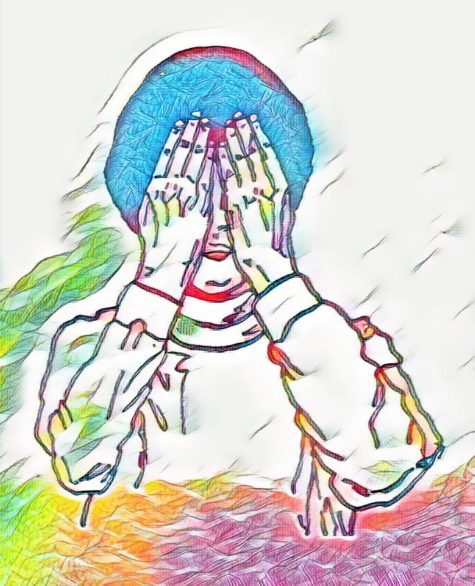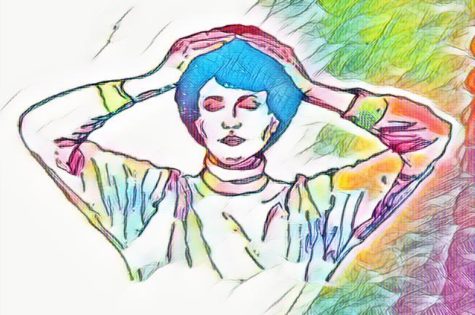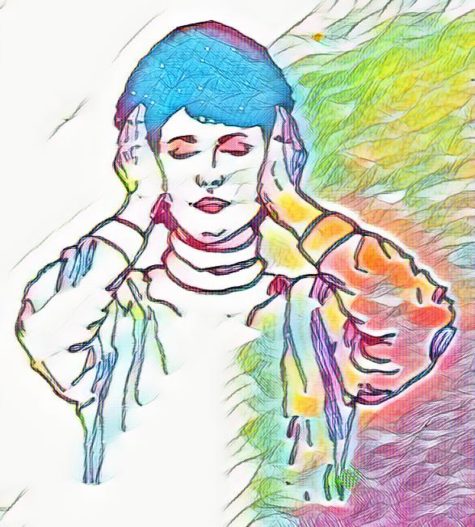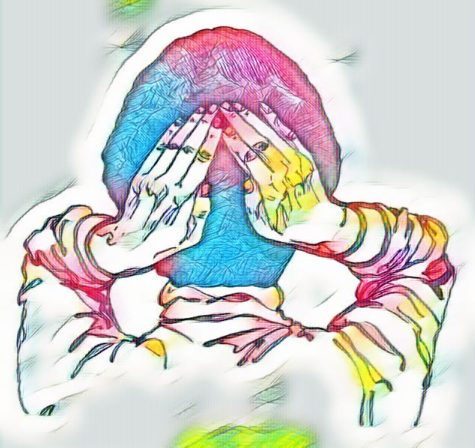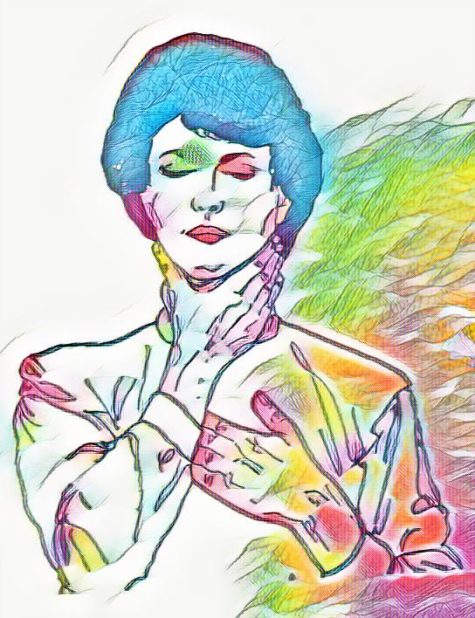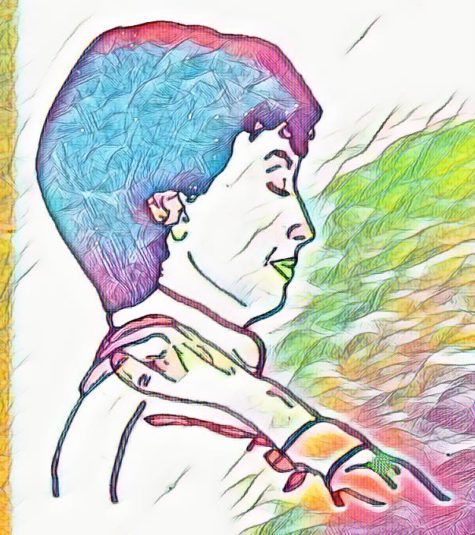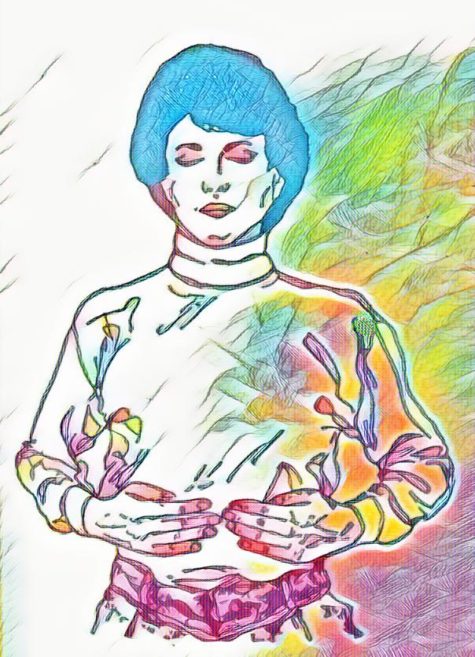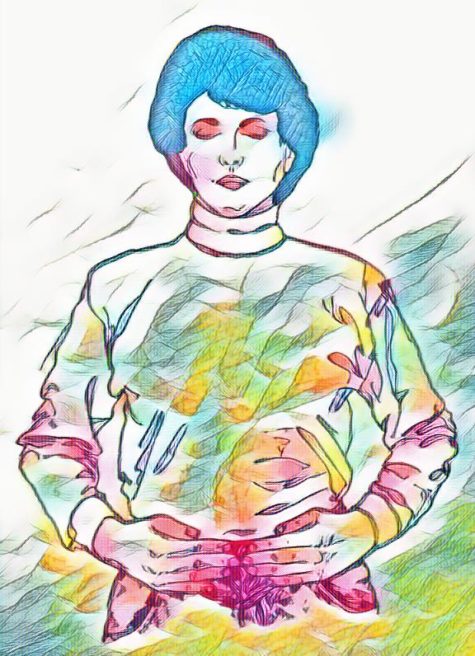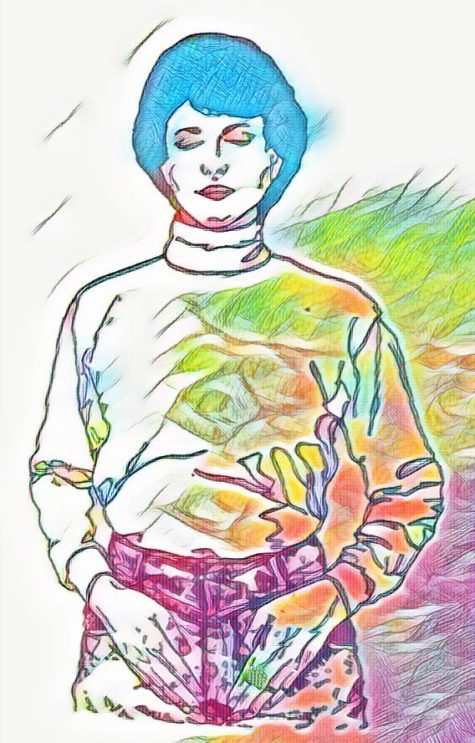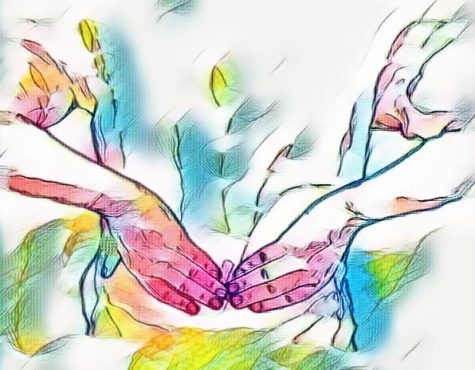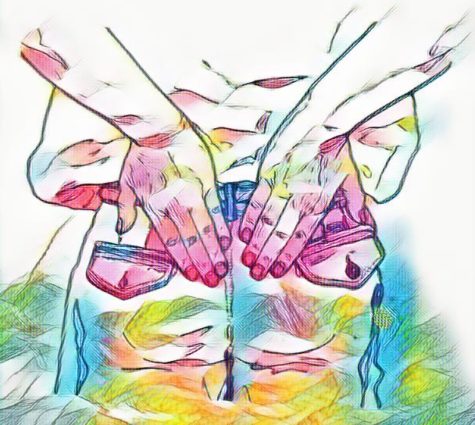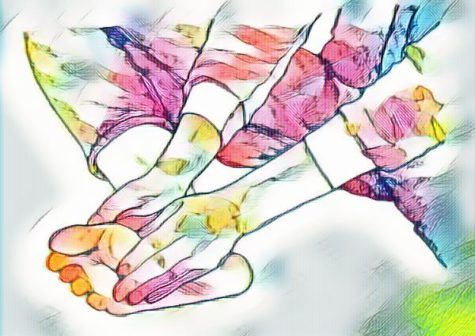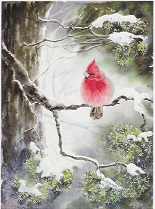Treatment Protocols
Shu Chu-Reiki
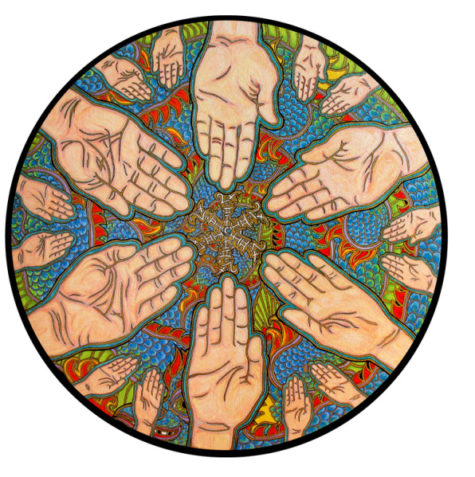
Shu Chu-Reiki is a concentrated Reiki group exercise. The Japanese word shu chu means “concentrated.” All group members give energy to one group member while wishing and praying for that person’s happiness and health. This can be a very intense experience, so use common sense when choosing the recipient.
Here’s how:
In a small group each person lays hands on the recipient, and begins the flow of Reiki along with the prayers and wishes for that person. Do it for 1 to 3 minutes per person.
Another way to do this is to form a human “chain” or circle. The first person touches the recipient directly, and the rest of the group forms a circle, or “chain.” Hands are placed on the shoulders of the person in front (and so on until each person is connected hands to shoulders).
The Reiki is then channeled through the “chain”. The energy flows and surges through every one participating in the healing and finally reaches the “patient.” A wonderful experience for all involved.
For my sources see: Recommended Reading
Reiki With Animals

Contrary to popular belief, you do not need a special class in order to use the healing power of Reiki on animals. The techniques vary slightly only because the shapes of animals and their needs are just a little different. What follows are some basic guidelines to help get you started.
Cats
Cats deserve special mention. Cats respond very well to Reiki. They seem to know instantly what it is. Unlike almost any other animal, cats will position themselves precisely under your hands according to exactly where they need the help. Once they realize what you’re doing, their desire to cooperate is instantaneous and their acceptance of the healing is usually total.
When they’re done, they’re done. They’ll move away. And when they want more, they’ll come back. Cats tend to show a bit of attitude about energy work. It’s possible that they think they invented it!
Once in a great while, you will find a cat who believes that she or he is already so perfect that Reiki is non-essential to their well-being. When you work on another human, or animal, however that same cat will be right in the middle of the Reiki treatment soaking up the good energy. It has been an observation that the older the cat, the more they seem to appreciate Reiki.
Dogs
Dogs love Reiki. It works to calm hyperactive dogs and to help rehabilitate abused dogs. Reiki is also wonderful for healing and overall well-being. Dogs tend to return to you once they’ve gotten the idea that you will do the treatments on them. They aren’t nearly as “efficient” about it as cats, although occasionally a dog will also turn an area needing Reiki to your hands.
I generally use the technique of activating the Reiki and then just letting my hands go to the area they feel most drawn to, or to where it seems most comfortable for the dog. I had a little dog with bad knees, and every night I put my hands on whichever knee was closest to me, and sent Reiki until we both fell asleep.
If you want to work with animals, it is helpful to familiarize yourself with breed specific needs. For example, some breeds of dogs, the German Shepard for example, have a history of hip or knee problems, and these areas may require more energy and more time.
Fish
You can either place a “Reiki bubble” around the fish tank, or you can “beam” the fish. The Reiki will pass through anything. You can also place your hands on the aquarium glass. They will stay in the Reiki field for as long as they want the energy and then they’ll move. If you keep your hands in place, you’ll find they will come back, expecting the energy to be there.
Birds
Birds, unless they have been hand raised and are quite used to human contact, do not normally like the restraint of human hands. This can be very stressful for them. For this reason, it usually works best to enfold the bird in a “Reiki bubble” or beam the Reiki directly to them.
You can also place your hands on either side of the cage. They will stay in the Reiki energy for as long as it is comfortable, and then they’ll move.
I once healed a bird with Reiki energy. It crashed into a window at my home and when I ran out to see if it was OK, it was limp, and it’s little head was at a weird angle. I picked it up and immediately the Reiki began to flow. The energy was very intense and strong, and after about five minutes, the little bird stirred, and next thing you know, he seemed just fine. He looked around a little startled, and then flew away.
Small Animals
It is important to remember that most small animals do not enjoy being physically restrained. Make every effort to ensure that the animal is comfortable and feels safe. Small animals can be held loosely in your hands while you allow the Reiki energy to flow.
If they are squirmy or seem uncomfortable with being held, you can hold your hands an inch or two away from them, and send the Reiki that way. Alternatively, you can send the Reiki into their cage or enclosure using a “beam” or “bubble.”
Do not worry if it seems the Reiki flow doesn’t last as long as you would expect when working with a person. Sometimes it doesn’t take much time for a small animal to receive the full benefit of the Reiki energy.
Large Animals
Large animals can be treated by simply activating the Reiki and then allowing your hands to go to whatever areas of the body they are drawn to, or that seem comfortable for the animal.
Beaming the Reiki is also an option, especially if the animal does not seem to enjoy the actual hands on contact.
Reptiles and Other Animals
Any time you are asked or guided to give Reiki to an animal that doesn’t seem to enjoy actual physical contact, use a “beam” of Reiki, or a Reiki bubble. If the animal allows, or seems to enjoy being touched, activate the Reiki energy and then allow your intuition to guide you.
Other Options
Other options for healing animals include infusing their water and food with Reiki energy. Infusing the food with healing Reiki energy is done by holding the food bowl, or food container, and sending the Reiki energy into it with the intention of infusing the food with healing power. Infusing the water with Reiki is done the same way.
Don’t Forget!
Even if the need for Reiki comes up suddenly, and you are treating on the fly, always remember to center yourself first, and open your heart. If you are doing a “full Reiki” treatment, approach it with the same respect and care that you would for a human client or friend.
And remember, just as with humans, respect the animal’s choice. If they reject the Reiki, or try to get away, do not force it.
Also, it’s very important to smooth the aura and cut the ties when complete, just as you would when working with a person.
For my sources see: Recommended Reading
Dr. Usui’s Original Hand Positions
Usui Shiki Ryoho is the most common form of Reiki in the world. This was Reiki in the Hayashi-Takata line. The 12 positions that Takata taught (varies slightly from system to system) are the set that most practitioners know. You can find them here: Hand Positions ~ Healing Others.
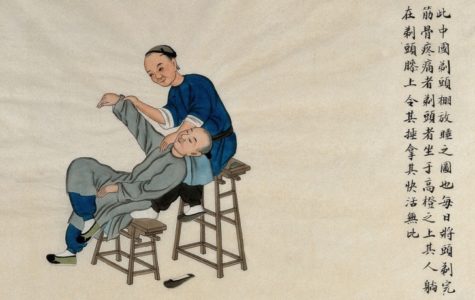
Hands on Healing is the common element to all versions of Reiki. In Japanese this is called “Te-ate” (pronounced “tay-ah-tay”). It would appear in Hayashi’s practices that he had several sets of hand positions at different points in the development of his interpretation of Reiki.
Hayashi Reiki Ryoho appears to have had 7 positions initially. It is a powerful set and follows the large intestine meridian in Traditional Chinese Medicine. It also appears that the set that Mrs. Takata taught was the one used for group treatment with several practitioners in Hayashi’s clinic.
It would appear that Usui either used Reiji and treated where indicated, or used a set of 5 hand positions and then used Reiji. Reiji is the ability of the Reiki practitioner to allow their hands to move or be drawn to the area of that body that needs healing.
Mrs. Takata also taught this technique of Reiji, teaching that we must notice the sensations in the hands and let them move. This happens as the hands become more sensitive with practice and as intuition develops. (Read how to do it here: Reiji-Ho and Chiryo.)
Reiji and Byosen Reikian-ho (focused healing method) were skills that were expected to be developed at Shoden (level I) before Okuden (level II) would be offered to the student.
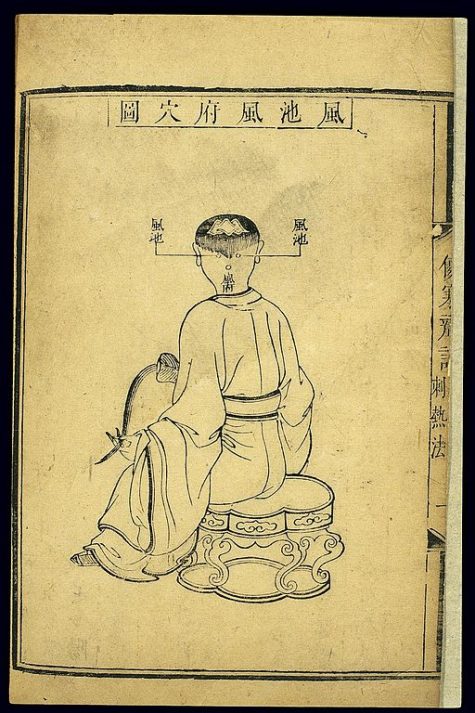
Usui’s five position set is based solidly on Traditional Chinese Medicine. The head and thorax are the 5 positions treated followed by Reiji. The body is considered to be the head and torso, and all major meridians pass through the head, thus by treating the head all areas of the body and mind are treated.
Here are the five positions:
Have the person sit. They are not laying down. These 5 positions were held for about 5 to 6 minutes each.
- 1. Zento-bu
This position is at the top forward part of the head. It is specifically at the hairline. You can use the technique of Nentatsu-ho to aid in the healing by using affirmations while you use this position.
- 2. Sokuto-bu
This is the standard hand position on the side of the head. The hands are on the sides of the head (i.e., one hand on either side).
- 3. Koutou-bu
This position is where both of the hands are placed on the upper part of the back of the head. This is the area between the base of the skull (bulb) and the top of the head.
- 4. Enzui-bu
In this position, both hands are placed on the bulb of the head. This area is the occiputal area commonly taught in Takata’s teaching.
- 5. Toucho-bu
In this position, both hands are placed on the top of the head.
After these 5 are performed for about 5 minutes each (or as needed) you follow this by performing Byosen Reikian ho (focused scanning healing technique) or Reiji. Using Byosen or Reiji guides you to know where to treat next for focused healing
For my sources see: Recommended Reading
Hand Positions ~ Healing Others
Here are basic visual guidelines for the hand positions when doing a full Reiki treatment. Remember these are guidelines only. Always follow your intuition, your heart, and your inner guidance when giving Reiki.
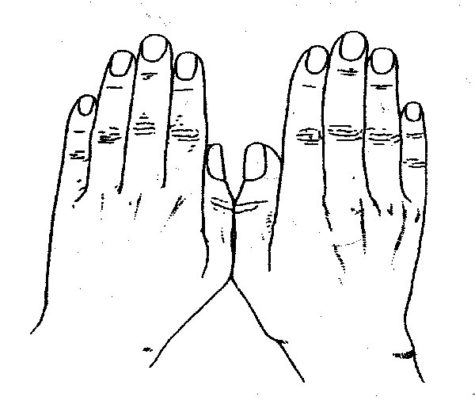
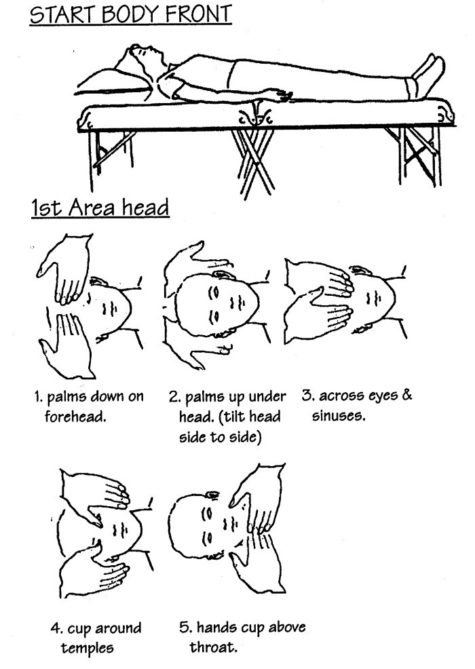
Start with the head area and then move down to the chest and arms.
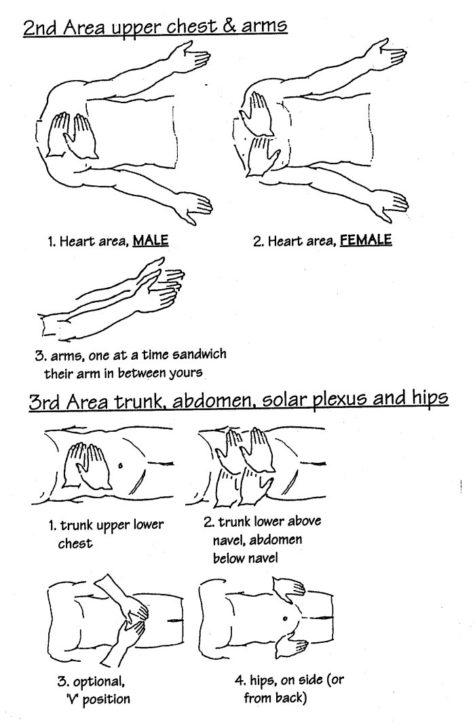
The next area is the abdomen, solar plexus and hips. Remember to never put your hands on or near the genital area. Then move on to the legs, knees, ankles and feet.
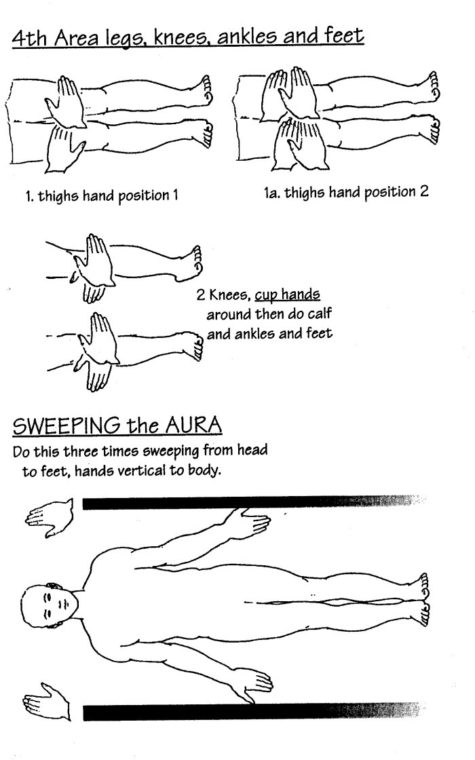
When you have finished with the feet, do a vertical sweep of the aura three times before having the client turn over.
Once the client has turned over and is lying on their stomach, begin again with the head area.
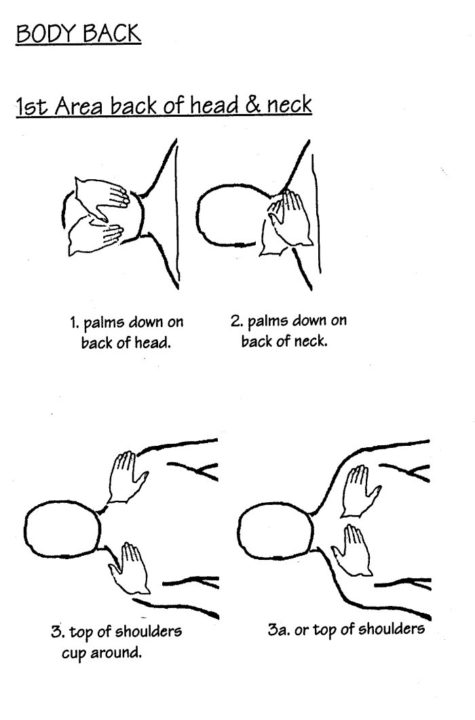
Move from the head area to the upper shoulders and then the spine, thighs and knees.
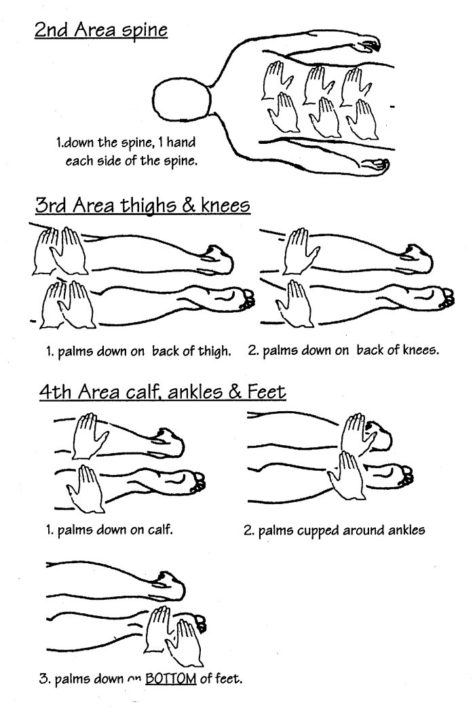
Finish up with the calves, ankles and feet.
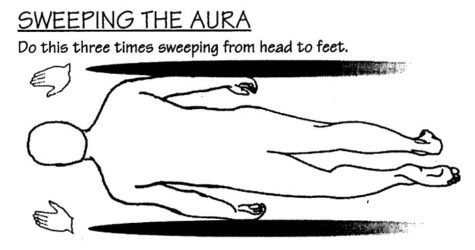
When the treatment is complete, sweep or smooth the aura. If desired, you can also add the following extra steps.
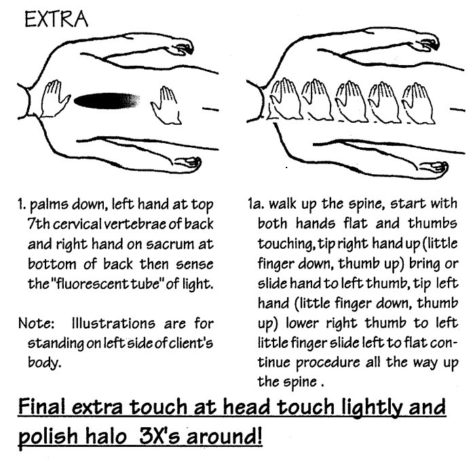
Now seal the energy.
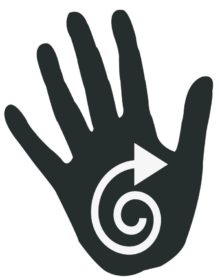
With your right hand, palm down, make a spiral over the small of the client’s back, as you do this silently affirm: “I seal this healing with love and light.”
And then cut the connection.
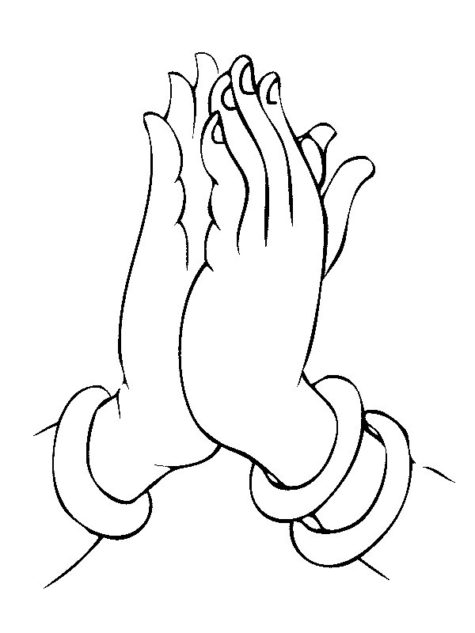
Swipe both of your hands together in a wiping motion, three times. This cuts the etheric connection between you and the client, and also works to turn off the Reiki.
The treatment is now complete. Instruct the client to sit up SLOWLY, give whatever assistance seems appropriate.
For my sources see: Recommended Reading
Treatment Guidelines
Here is another set of guidelines for giving a Reiki treatment. These are practical instructions and ideas for facilitating a professional and comfortable experience for the client.
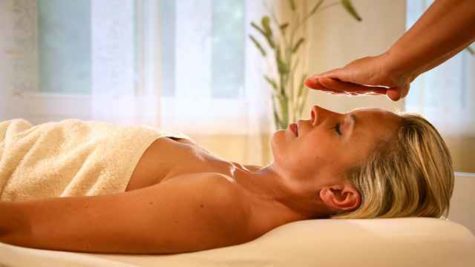
- Clear the room of energies that don’t belong. You can accomplish this by placing a “bubble” of Reiki energy to encompass the entire room.
- Ground, center, and focus yourself.
- Wash your hands before and after each treatment. Be sure that you have taken a bath or shower beforehand. Avoid any overpowering scents.
- Prepare music. Make sure it is complimentary to Reiki.
- Have Kleenex available to you and the client.
- Lower the lights to a soft glow.
- Make sure the sheets are clean and neat.
- Use lightly scented incense or oil that is conducive to healing.
- Have the client remove shoes, jewelry, glasses, and empty their pockets. Prepare them beforehand to wear loose, comfortable clothing.
- Ask them if they have any specific health concerns that you need to be aware of. If so, you can ask for guidance in your prayer before you start.
- Talk with the client and let them know exactly what you will be doing.
- Be aware of the laws in your area. There are some states that do not allow for you to touch a person in any way unless you are licensed.
- Refrain from too much conversation during the treatment, as this takes away from the client’s experience.
- Remember to keep your fingers together and your hands lightly cupped throughout your treatment.
- Do not breathe directly on the client.
- Keep your hand pressure light. Do not press on them.
- Pick your hands up when moving from one position to the next.
- When you have the client turn over please tell them to do so SLOWLY. Some clients will feel lightheaded at this point.
- Do not forget to smooth or sweep the client when you are done. And ALWAYS zip them up.
- When you have completed the entire session ask them to sit up SLOWLY on the side of the massage table and balance them as you were shown.
- Let them sit there, or in a chair close by, for a few minutes before they leave. This allows you to watch them to make sure they are properly grounded.
- Give them a bottle of water to drink, or offer a cup of herbal tea.
You may want to let the client know that sometimes they may feel worse after a treatment for a few days. This is due to the healing process being accelerated. Tell them to not concern themselves if this is the case. However, make yourself available to them for communication after the treatment. Do not make a big issue about this. Some people have a tendency to hang on to “negative” thoughts so please be discerning about this issue.
After the client leaves, blow out any candles, turn off the music, turn up the lights, and give thanks to all who helped you with this treatment. Wash your hands. If you feel you are not grounded do one of the procedures for grounding.
For my sources see: Recommended Reading
Gedoku-Ho
The Detoxification Technique.
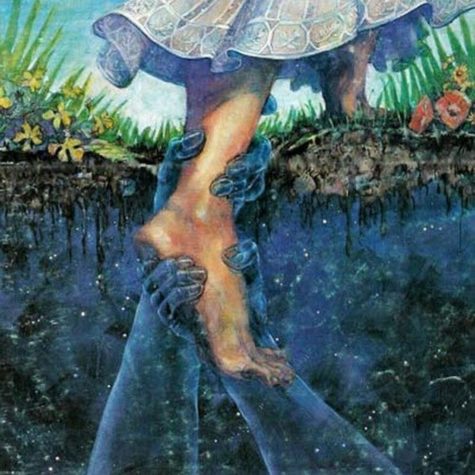
The Japanese word doku means “poison” or “toxin” and the word ge means “to bring down.” This technique is used to detoxify a client or yourself.
Here’s how:
- Place one hand on the tanden and the other behind it on the lower back.
- Leave your hands there for 13 minutes while simultaneously imagining all the toxins leaving the body of the Reiki receiver.
- Encourage the person receiving treatment to also imagine all the toxins leaving the body.
You can imagine that the toxins are flowing out through the bottoms of the feet into the care of Mother Earth for purification and recycling.
When complete, give the client a glass of Reiki charged water, and encourage them to drink plenty of water for the next 3 or 4 days to facilitate the detox.
Also suggest an Epsom salts bath to be taken that evening. This will leach the released toxins out of the system, and the person will be physically more comfortable the next day.
You might also mention that a detox may have a physical effect on the body. The person might experience a “healing crisis” as the body adjusts.
If Gedoku-ho is done at the end of a Reiki treatment, or if it is done as a stand alone treatment, remember to sweep and seal the aura, and detach yourself.
If Gedoku-ho is done at the beginning, or middle of the session, you would then continue with the treatment. Always follow your inner guidance and allow yourself to be directed by Spirit.
For my sources see: Recommended Reading
Giving A Complete Reiki Treatment
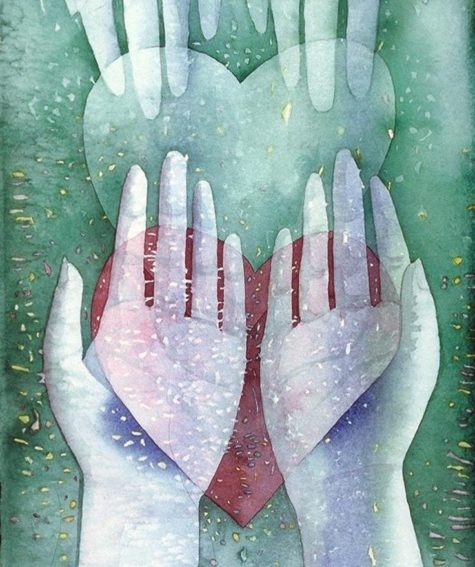
Sometimes it helps to have a check-list or some reminders handy when you are getting ready to give a complete Reiki treatment. This is especially helpful when you are first starting out.
Most of the time I do Reiki on the fly, and all of the rules fly out the window… but sometimes it’s good to remember the little details of how to provide a great healing experience for your client.
Daily practices for being centered and clear:
- Gassho Meditation
- Joshin Koykuu-Ho (Breathing Meditation)
- Other forms of meditation that work for you
Preparing the space:
- Make sure the Reiki area is clean and free of clutter.
- Burn incense, sage, or diffuse appropriate essential oils.
- Put on music that is soothing and healing.
- Light candles if that feels appropriate.
Spend a few minutes with the client:
- Spend a few minutes talking with the person to gain rapport and to establish the intent of the session.
- If this is the first session with this person, explain the Reiki process and hand positions.
- Answer any questions the person may have.
- You might also have the client read and fill out a client information form.
Before you start:
- Wash your hands and rinse out your mouth.
- Make sure the client and you are both comfortable.
- Especially make sure that you can sit (or stand) in a comfortable position with arms and hands relaxed while giving the treatment.
- Ask the client to close his or her eyes and meditate on being thankful for, and open to, all the healing energies that are coming.
Getting started:
- Sit quietly with your hands on your legs doing Reiki on yourself for a few moments.
- Find a feeling of love and peace, and allow it to grow within yourself.
- Enfold your client in this feeling of love, gentleness and compassion.
- Say a prayer asking your High Self, God, Angels, and all the healing forces of the Universe to work with you and your client to protect the process and create the most powerful healing possible.
- If you choose, you can use any or all of the techniques to increase the power of Reiki. (See them here).
The treatment:
- Reiji-Ho (intuitive guidance)
- Chiryo (put Reiki where it is needed)
- Or you can do a standard treatment with all the hand positions.
- And/or you can use other techniques as guided.
- Such as Gedoku-Ho (the detoxification technique).
End with:
The auric field first and then the physical body.
- Smooth the aura.
- Seal the energy.
- Cut the connection.
- Help the person to sit up.
- Bring them a glass of water that has been charged with Reiki.
- Encourage the client to drink plenty of water for the next few days.
- Also suggest a warm bath with 2 cups of Epsom Salts.
- If the person is really spaced out, have them go outside and get grounded.
After the session:
- Say a short prayer of thanks.
- Sit quietly doing Reiki on yourself.
- Rinse your hands, face, and mouth with cold water.
Food for thought:
Techniques are fingers pointing to the moon. They are tools and not to be confused with the “real thing.” YOU are the real thing. YOU are the moon and not the finger pointing to it. Beyond thoughts and emotions, body and soul, good and bad, health and disease, Reiki energy, all your concepts, your dreams and aspirations, you are it!
Always ask yourself who is doing the experiencing. At the end of the day, the only question that remains is, “Who Am I, Who Am I, Who Am I?” When that question is answered, all suffering comes to an end.
For my sources see: Recommended Reading
Preparation For A Reiki Treatment
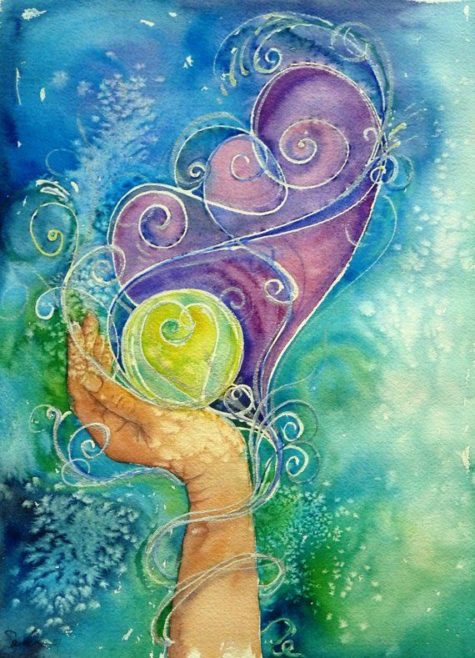
Before giving an intensive, or full body, Reiki treatment, it is important to prepare yourself.
Make sure the treatment area is as clean and as clutter free as possible. Even if all you do is clear off the sofa, this small step will help clear the energy around you and around the person you are working with.
Wash your hands, and rinse out your mouth with cold water. It is always important to do this before any full body Reiki treatment.
Close your eyes and focus on your physical body. Take three deep breaths and focus yourself on the work ahead, then say a silent prayer to ensure the best Reiki treatment available to them (or you).
You might also want to do Gassho, Reiji-Ho, Joshin Kokyuu-Ho, Kenyoku, or other forms of centering and meditation.
After accomplishing this, it is very important that you ground yourself. This keeps you present here on the physical plane. And if you are working on a client it helps you to keep them here. Without the grounding some people have a tendency to “travel out.” While this is not bad, it certainly can be difficult to “come back.”
When you are channeling energy, it is important to ground:
- Make a connection to Mother Earth.
- Stand with your feet flat on the floor, knees slightly bent.
- Visualize a cord extending from your Root Chakra going deep into the Earth.
- Down to the center of the Earth…
- Hooking or attaching itself to the Earth.
- Feel it.
Once you have made your connection you can then travel back up to your physical body and begin the treatment.
If, after a treatment, you or the client feel light headed and can’t seem to be present, here are a few suggestions:
- Eat a meal, but stay away from sugar as this tends to be in direct opposition to what you wish to accomplish.
- Take a walk indoors and become aware of the plant kingdom.
- Hug a tree.
- Take a shower.
- Soak for at least 20 minutes in a warm bath with 2 cups of Epsom Salts. This also helps to discharge toxins and negative energy.
For my sources see: Recommended Reading
Reiji-Ho and Chiryo

Reiji means “indication of the spirit” and is the second pillar of Reiki. This is a process that prepares one to give a Reiki treatment. It involves the use of Gassho, a short prayer for the benefit of the client and focus on ones intuitive guidance.
Here’s how it works:
- Do the Gassho meditation, but only for a minute or so.
- Say a prayer giving thanks to the spirit of Reiki and asking it to begin flowing now.
- Say a prayer on behalf of the client, asking that she/he be completely healed.
- Bring your hands up to the third eye and ask the spirit of Reiki to guide your hands to where they are needed.
- Now wait and see what happens.
- Follow your inner guidance and allow your hands to be directed by the spirit of Reiki.
- You will be guided to a certain area of the body.
You may see a body part in front of your inner eye, or the body part to be treated may “jump” out at you. You might even hear what part of the body to treat, or you may simply feel or know where you should start. Some people feel the prompting within their own bodies.
Notice any internal impressions you may get. Use all the clues available to you. Trust your intuitive self.

Chiryo
This word means “treatment” and is the third pillar of Reiki. The kind of treatment Dr. Usui taught relies on ones inner guidance rather than a predetermined set of hand positions. In this way, each treatment is unique and focuses on what the client needs to create wholeness.
After doing Reiji-ho, continue to follow your inner guidance allowing yourself to be directed. Treat as many places on the body or in the aura as you feel compelled to. During this process, allow yourself to enter a very relaxed state and to become one with the Reiki energy.
For my sources see: Recommended Reading
Hand Positions – Self Treatment
The hand positions on this post are taught by William Rand. You can vary them according to your own needs, although you should give yourself a full treatment as often as possible.
Position 1. Place the hands over the face with the fingers at the top of the forehead and the hands touching.
Position 2: Place the hands on the top of the head with the fingers touching, but not over-lapping. Palms are close to the top of the ears.
Position 3: Place the hands on the sides of the head over the ears.
Position 4: Place the hands on the back of the head with the base of the palms at the base of the skull.
Position 5: Place the right hand over the throat and the left hand over the heart.
Position 6: Place both hands over the shoulders close to the neck.
Position 7: Place the hands with the fingers touching over the upper stomach just below the lowest rib.
Position 8: Place the hands over the middle of the stomach with the fingers touching at the navel.
Position 9: Place the hands on the lower stomach with the base of the hands near or on the hip bones and the finger tips over the pubic bone.
Position 10: Place the hands in the middle of the back, fingers touching.
Position 11: Place the hands on the lower back with the finger tips over the sacrum.
Positions 12: Hold the left foot with both hands in a way that is comfortable.
Positions 13: Hold the right foot with both hands in a way that is comfortable.
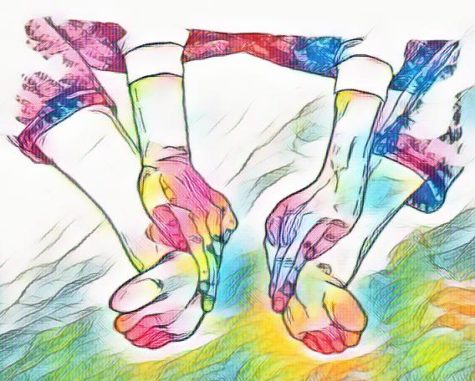
Position 14: Hold the right foot with the right hand and the left foot with the left hand in a way that is comfortable.
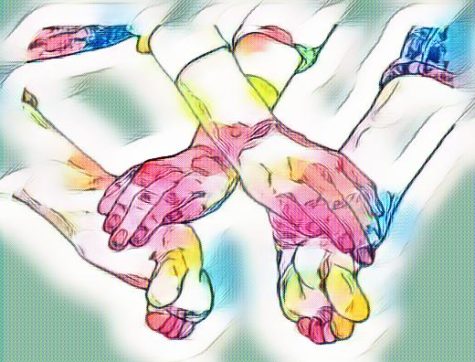
Position 14 – Alternate: Hold the right foot with the left hand and the left foot with the right hand in a way that is comfortable.
For my sources see: Recommended Reading
Cindy Plante: Gedoku-Ho
Gregory: Natural Power Spots
Alexander Boyd: The Seven Subtle Bodies
Alexander Boyd: The Seven Subtle Bodies
Alexander Boyd: The Seven Subtle Bodies
